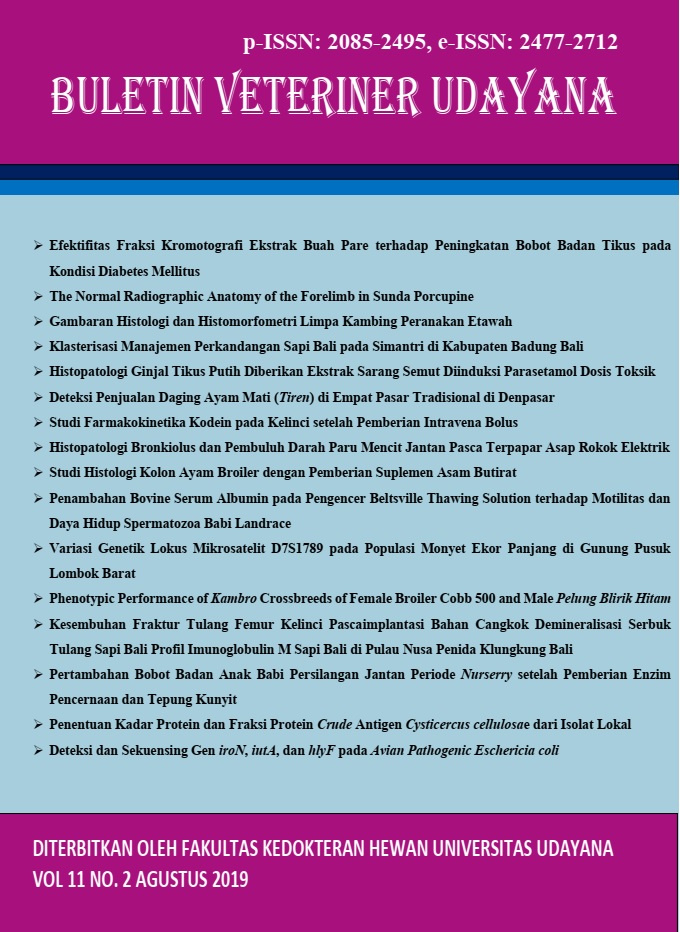THE STUDY PHARMACOKINETIK CODEINE IN RABITT AFTER INTRAVENUS BOLUS
Abstract
The codeine has been used as a marker for illicit heroin uses, that for increasing differentiating illicit heroin uses, it needs the codeine pharmacokinetic data. Eleven rabbits have been injected 11.04 mg codeine (with body weight: ± 1.8 kg) via marginal vena. Blood has taken at every 5, 15, 30, 60, 90, and 120 minutes. Serum has stored at -20 0C before analyzed. Blood protein was predicated by isoprophanol. Codeine was extracted with chloroform-isopropanol (3:1) and buffer phosphate 0.2N pH 9.3 then separated by phase toluene-acetone-ethanol-ammonia (45:45:7:3) as mobile phase and aluminium sheet of silica thin layer chromatography Gel 60 F254 as the stationary phase. Codeine determined by spectrophotodensitometry at 215 nm. Limit of detection and limit of quantification of codeine was 184.43 ng and 563.62 ng per spot, respectively the percentage recovery of in vitro was 60.60%. Profile concentration of codeine after IV bolus showed decreasing concentration at the first terminal and increasing codeine concentration at the last terminal that indicated an enterohepatic cycle. Codeine pharmacokinetic followed the first compartment with the half time was 30.61 minutes and the distribution volume was 7760.50 mL. Enterohepatic cycle caused a prolonged lifetime of codeine at the rabbit
Downloads
References
Rowland M, Tozer TN. 1995. Clinical pharmacokinetics concepts and application. 3rd Ed. Lippincott Williams & Wilkuns. Philadelphia.
Schiff P. 2002. Opium and its alkaloids. Am. J. Pharmaceutic Edu. 66: 186-194.
Shargel L, Yu A. 1999. Biopharmacetics and pharmacokinetic. 4th Ed. United State. Prentice-Hall International Inc.
Texier JP, Bertran P, Coutard JP, Francou B, Gabert P, Guadelli JL,Ozouf JC, Plisson H, Raynal JP, Vivent D. 1998. Transit, an experimental archaeological program in periglacial environment: problem, methodology, first results. Int. J. Geoarchaeol. 143(5): 433-473.
Wirasuta IMAG. 2005. Hambatan dalam penegakan Undang-Undang No. 22 Th 1997 tentang narkotika, khususnya pada penyalahgunaan narkotika golongan opiat ditinjau dari sifat farmakokinetiknya. Dalam: Wirasuta I MAG, Yowani SC, Suaniti NM, Wirajana N, Junitha K, Alit IB, I.B.P., Leliqia, E., Ariantari. Peranan Kedokteran Forensik Dalam Penegakan Hukum Di Indonesia. Bali: Universitas Udayana, Pp: 127-132.





